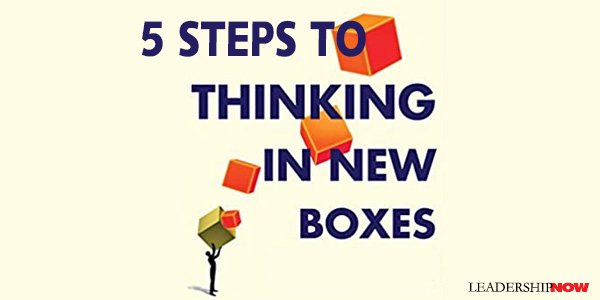 |
 |
10.16.13

5 Steps to Thinking in New Boxes
THINKING outside-the-box is a useful metaphor for thinking creatively or trying to get out of a rut. But practically speaking, it’s not going to happen. Your brain just doesn’t work that way. Your brain needs boxes. You can’t think without them. We create and use mental boxes to organize and use what we know. The reality is, getting out of one box means getting into another. Thinking outside-the-box really means finding a new box. A new box with different assumptions, prejudices, beliefs, and parameters. A different box will give you different answers because it forces you to ask different questions. In Thinking in New Boxes, authors Luc de Brabandere and Alan Iny say that the improved solution will be found in a new box. Here’s the key thought: “Since your brain needs models or boxes to think, the key to being creative in practical ways, to managing change during these times of such uncertainty, is to first try to understand your existing boxes to a greater degree, and then attack any situation or issue by developing a range of new boxes. You can then carefully choose which box(es) to use, even as you embrace the ambiguity inherent in doing so.” Based on how the human mind actually thinks and reasons, the authors have developed a five-step approach to thinking in new boxes: Step 1: Doubt Everything
Step 2: Probe the Possible
Step 3: Diverge
Step 4: Converge
Step 5: Reevaluate Relentlessly
Thinking in new boxes is first about being aware of the box you’re in and why you’re in it. The reason many find it difficult to change – to move to a new box – is because they don’t know why they think and do what they do. Once you do, it’s easier to see where you need to go and what you need to do. 
Posted by Michael McKinney at 11:46 PM
|
BUILD YOUR KNOWLEDGE
 

How to Do Your Start-Up Right STRAIGHT TALK FOR START-UPS 
Grow Your Leadership Skills NEW AND UPCOMING LEADERSHIP BOOKS 
Leadership Minute BITE-SIZE CONCEPTS YOU CAN CHEW ON 
Classic Leadership Books BOOKS TO READ BEFORE YOU LEAD |